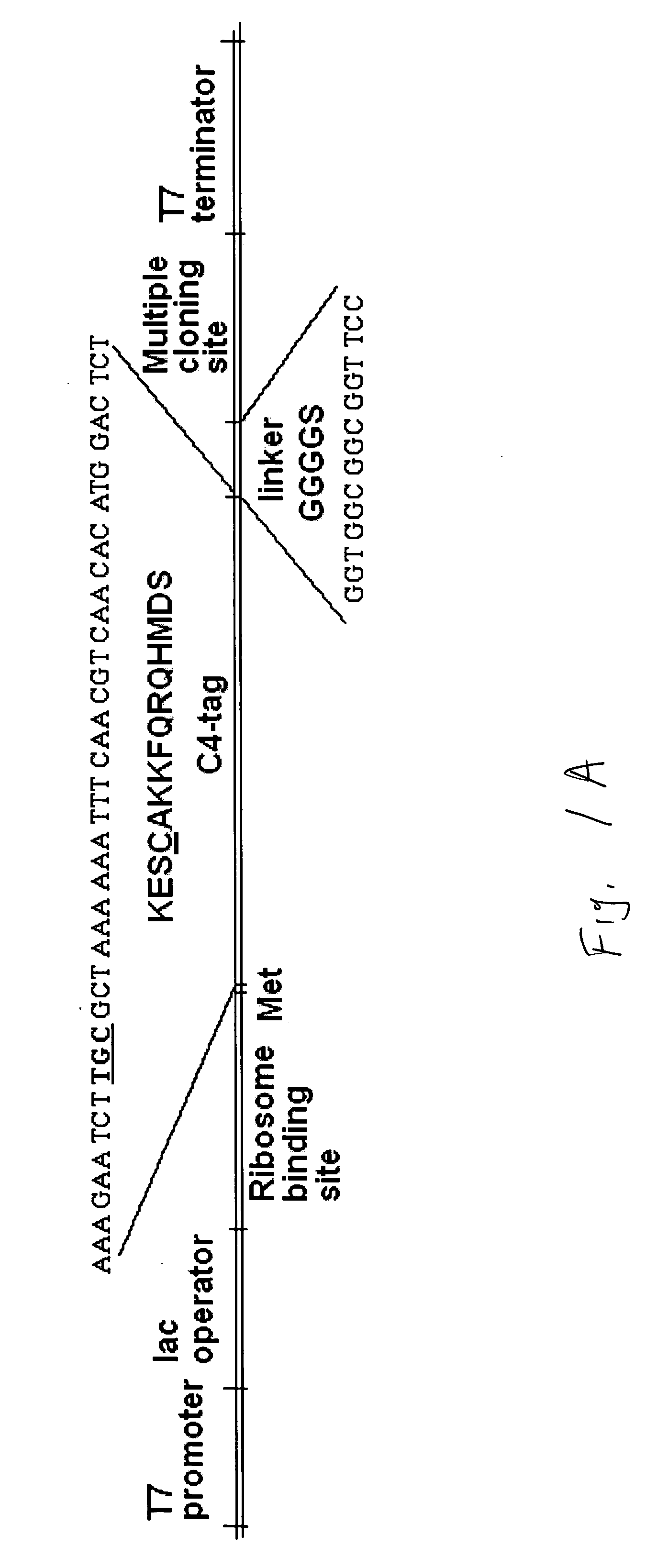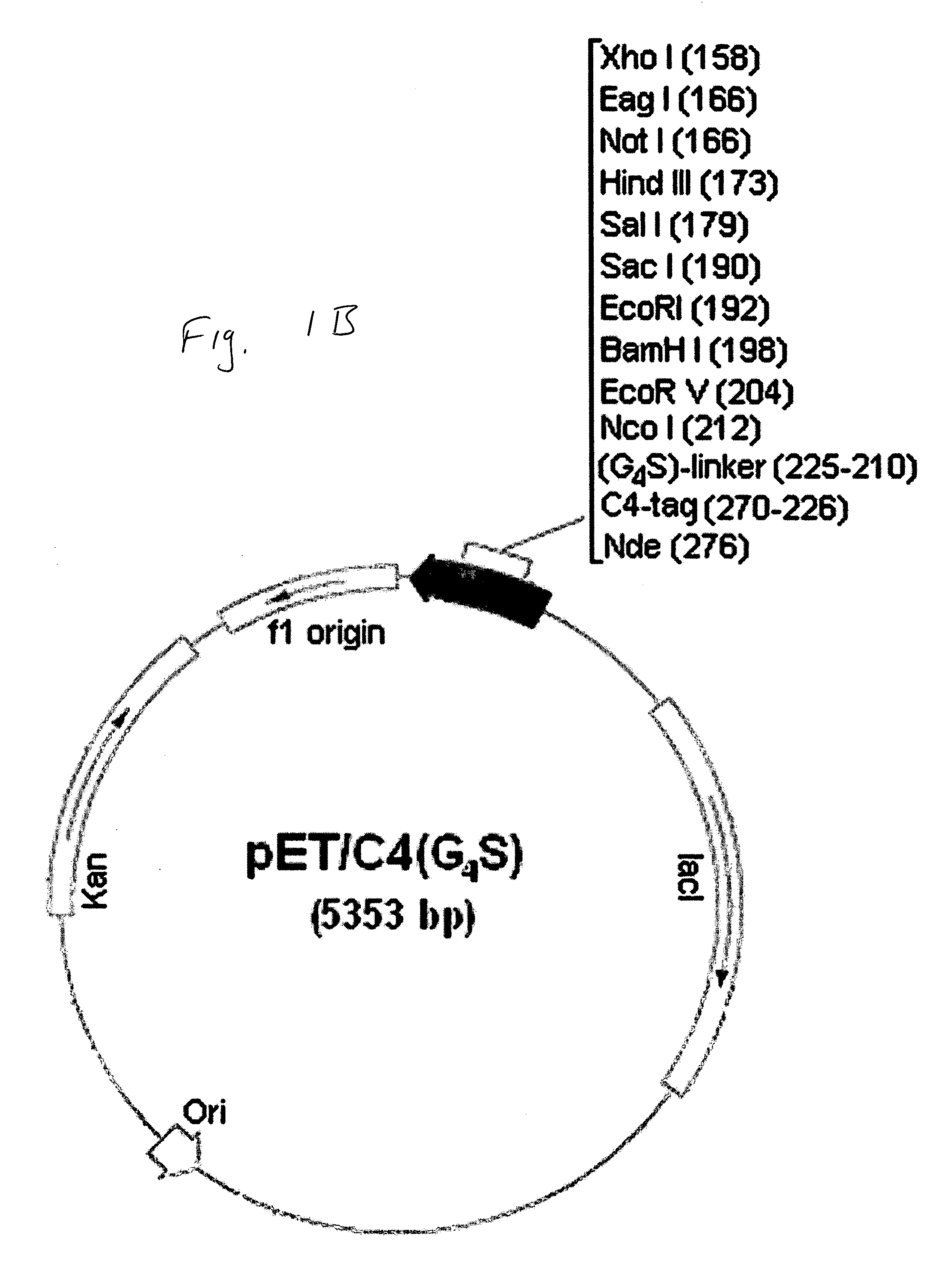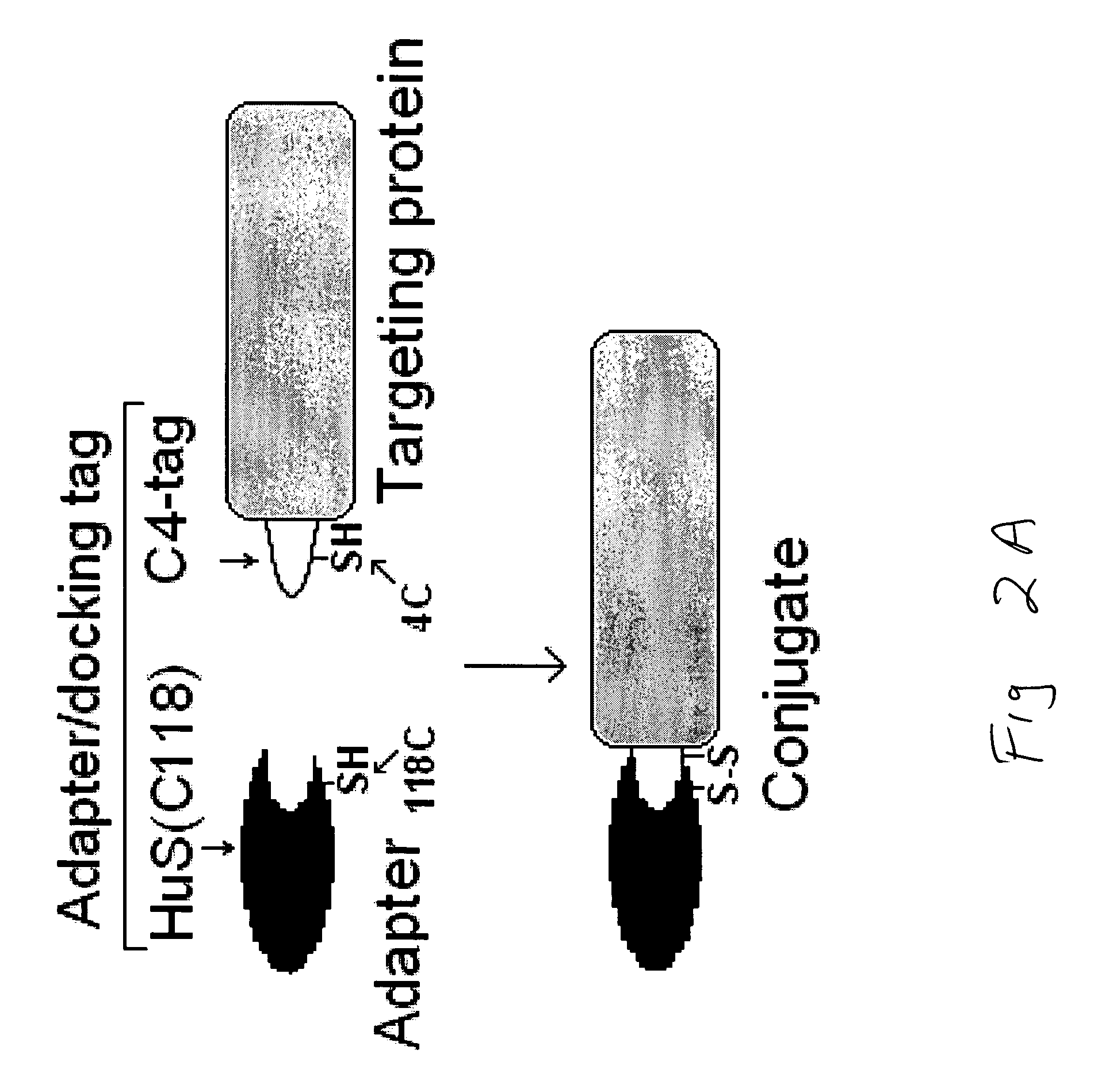Cysteine-containing peptide tag for site-specific conjugation of proteins
a protein and site-specific technology, applied in the field of nucleic acid and protein sequences, can solve the problems of limited conjugation to cysteine residues available, inability to readily be used for chemical conjugation, and significant affecting protein yield, solubility and functional activity
- Summary
- Abstract
- Description
- Claims
- Application Information
AI Technical Summary
Problems solved by technology
Method used
Image
Examples
example 1
Construction and use of Expression Vectors Containing C4-and a Linker Peptide
[0066] 1. Bacterial Strains and Plasmids
[0067]E. coli strain DH5α-T1 is commercially available from Invitrogen (USA). E. coli strains B121(DE3)and NovaBlue are commercially available from Novagen (USA). The pET29a(+) bacterial expression vector was obtained from Novagen (USA). The pLen-121 plasmid containing the DNA sequence encoding the 121 -amino acid residue isoform of human VEGF has been described in U.S. Pat. No. 5,219,739, herein incorporated by reference in its entirety, and was obtained from Dr. J. Abraham (Scios Nova, Inc., USA). The pPAP1-1.6 plasmid containing the DNA sequence encoding human annexin V was obtained from Dr. J. Tait (University of Washington School of Medicine, Seattle, Wash.). The pGEX-KG LF254 plasmid containing the DNA sequence encoding non-toxic N-terminal fragment of anthrax lethal factor (LFn) was obtained from Dr. S. Leppla (National Institute of Allergy and Infectious Dis...
example 2
Site-Specific Conjugation of C4-Tagged Proteins to Adapter Protein HuS(C118)
[0101] The protocol included site-specific conjugation of C4-tagged proteins to adapter protein HuS(C118) and testing the functional activities of conjugates in tissue culture.
[0102] HuS(C118) prepared as described above, and C4-tagged proteins, such as C4-VEGF, or C4-annexin, or C4-LFn, were mixed in a buffer containing 20 mM Tris HCI pH 8.0, incubated at 4° C. for 16 hrs, and then analyzed by SDS-PAGE under reducing and non-reducing conditions. SDS-PAGE analysis under non-reducing conditions revealed new protein products formed in the mixtures during incubation (FIG. 2C, no DTT lanes). The molecular weights of the proteins in these bands corresponded to the molecular weight of conjugates carrying one or two HuS molecules per parental protein, respectively. Under reducing conditions these bands disappeared, and only bands corresponding to parental proteins and 12-kDa HuS(C118) were detectable (FIG. 2C, pl...
example 3
Site-Specific Conjugation of C4-VEGF and C4-scVEGF to Radionuclide Chelator, 5-Maleimido-2-Hydraziniumpyridine Hydrochloride
[0104] The protocol included site-specific conjugation of C4-VEGF and C4-scVEGF to chemically active radionuclide chelator 5-maleimido-2-hydraziniumpyridine hydrochloride (Solulink, San Diego, Calif.), and testing the conjugate in tissue culture.
[0105] C4-VEGF, prepared as described above, was mixed with dimethylformamide dissolved 5-maleimido-2-hydraziniumpyridine hydrochloride hereinafter designated as HYNIC at the molar ratio HYNIC / protein 3:1 in a buffer containing 20 mM Tris HCl pH 8.0 and incubated for one hour at room temperature. The product, designated HYNIC-C4-VEGF, was purified on PD-10 column (Amersham, USA) equilibrated with 0.114 M Tricine, pH 6.9. Analytical RP HPLC (FIG. 4, Panel A) was used to determine the concentration of protein by detection of optical density at 216 nm and the concentration of HYNIC by detection of optical density at 310 ...
PUM
| Property | Measurement | Unit |
|---|---|---|
| Composition | aaaaa | aaaaa |
| Biological properties | aaaaa | aaaaa |
| Nucleic acid sequence | aaaaa | aaaaa |
Abstract
Description
Claims
Application Information
 Login to View More
Login to View More - R&D
- Intellectual Property
- Life Sciences
- Materials
- Tech Scout
- Unparalleled Data Quality
- Higher Quality Content
- 60% Fewer Hallucinations
Browse by: Latest US Patents, China's latest patents, Technical Efficacy Thesaurus, Application Domain, Technology Topic, Popular Technical Reports.
© 2025 PatSnap. All rights reserved.Legal|Privacy policy|Modern Slavery Act Transparency Statement|Sitemap|About US| Contact US: help@patsnap.com



